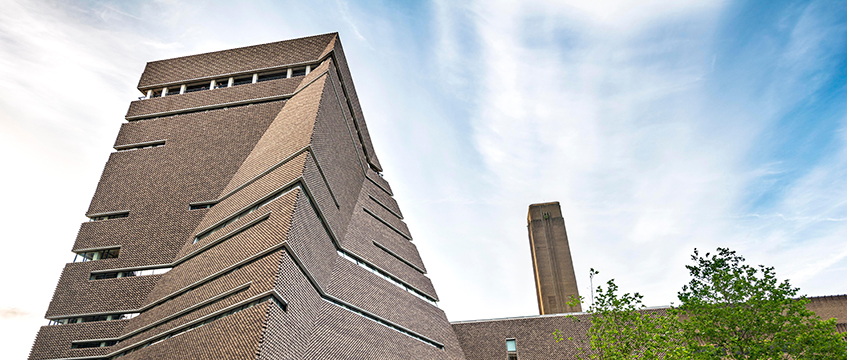In 1341, a court in London dealt with a neighbour dispute concerning “overlooking”. A person had built a watchtower “upon which he and his household stand daily, watching the private affairs of the [neighbour] and her servants” in an adjacent tenement. In that case the watcher admitted this was a nuisance (presumably both in the normal and legal sense) and stopped.
Getting on for 700 years later, the Supreme Court dealt with another watchtower. This time it was the Tate Gallery, and its “household” had camera phones and social media accounts.
In Fearn and others v Board of Trustees of the Tate Gallery [2023] UKSC 4; [2023] PLSCS 22, the Tate Modern Gallery had opened a public viewing platform on the top floor of an extension. The platform offered expansive views over London but also directly into an adjacent block of flats. The flat owners started proceedings and argued that being overlooked in this way was a nuisance. The flat owners lost at trial and on appeal but – by a three to two majority – won in the Supreme Court.
The majority in the Supreme Court said that if the overlooking was not a nuisance, it would be like saying that “because ordinary household noise caused by neighbours does not constitute a nuisance, inviting a brass band to practice all day every day in my back garden cannot be an actionable nuisance”.
A Scottish watchtower owner might take comfort from the fact that an authoritative guide to Scots law – the Stair Memorial Encyclopaedia – states (though without citing any positive authority) that “there is no ‘natural right’ to enjoyment of… privacy in the sense of freedom from being overlooked or inspected by neighbours”. However, in light of Fearn, this conclusion requires a second look.
Nuisances in Scotland and England
Many authors, and judges, have sought to map out the law of nuisance in Scotland, as compared to England and Wales.
The current position is accurately, if unhelpfully, summarised in Scottish Land Law (SULI, 3rd ed): “It is not clear that Scots law and English law use ‘nuisance’ to mean the same thing, although it is sometimes said that the law is the same in both countries”. In Watt v Jamieson 1954 SC 56, the court considered a number of Scottish and English cases and noted that generally the “balance in all… cases has to be held between the freedom of a proprietor to use his property as he pleases and the duty on a proprietor not to inflict material loss or inconvenience on adjoining proprietors”.
While Scottish courts have undoubtedly relied on their English counterparts’ logic on occasion, they have also seemingly filled certain gaps in Scottish nuisance jurisprudence with law from other areas, including the law of property.
Given the historical differences in the countries’ legal systems, and lack of UK-wide legislation dealing with nuisances, it is not surprising the Scottish law definition of a “nuisance” does not slot neatly into the legal landscape of England and Wales. However, this is not solely some historical point of interest that is only of technical application – this is a sphere of law dealing with how one may enjoy one’s land.
It seems difficult to argue, in the absence of very clear authority, that the law in Scotland will (or should) lead to fundamentally different results. The aim of the law of nuisance does not seem different north or south of the border.
Scottish Fearn
If the facts of Fearn took place in Scotland, it is likely the court would have been able to arrive at the same outcome and hold that it was unlawful to build a “watchtower” to allow the public to surveil a neighbour. In making the argument, a Scottish pursuer could readily point to the concept of material inconvenience from Watt (and other cases) and the absence of any cases that have authoritatively decided that there is no protection of privacy.
Unsurprisingly, analogous Scottish cases are thin on the ground. One recent Scottish case that raises some conceptually similar (though legally different) issues is Woolley v Akram 2017 SLT (Sh Ct) 175. In that case, the pursuers sued for damages under the Data Protection Act 1998 (and only on the basis of a breach of the Act – no mention of nuisance). Their complaint was their neighbour (who lived directly beneath them) had installed cameras that recorded video and audio that captured a significant amount of detail of their comings and goings. The pursuers were successful and were awarded damages.
It would have been interesting if the pursuers in that case had also brought a claim under the Scots common law of nuisance (and/or aemulatio vicini – which operates to prevent a person exercising an otherwise lawful right, where they are doing so in order to injure another).
If the sheriff at Edinburgh had been given a chance to consider the law of nuisance with respect to CCTV cameras, he might well have found himself part of a discussion of watchtowers in London going back 700 years.
Summary
Fearn will not affect all landowners, developers or tenants. It has not created a brand new and absolute right to privacy in one’s home, but reflects the Supreme Court applying old law to modern and very unusual facts. If one is using land in an ordinary way, Fearn is of no real interest whether in Scotland or in England.
It will however be interesting to see whether the reinvigoration of discussion on the law of nuisance and overlooking will lead to further judicial developments – on both sides of the border.
It can perhaps also be expected to prompt landowners who feel their privacy has been invaded to test the limits of what amounts to an ordinary use of their neighbour’s land which results in overlooking.
Edward Gratwick is a legal director and solicitor advocate and Patrick Campbell Corcoran is an associate in the Scottish commercial disputes team at Addleshaw Goddard









